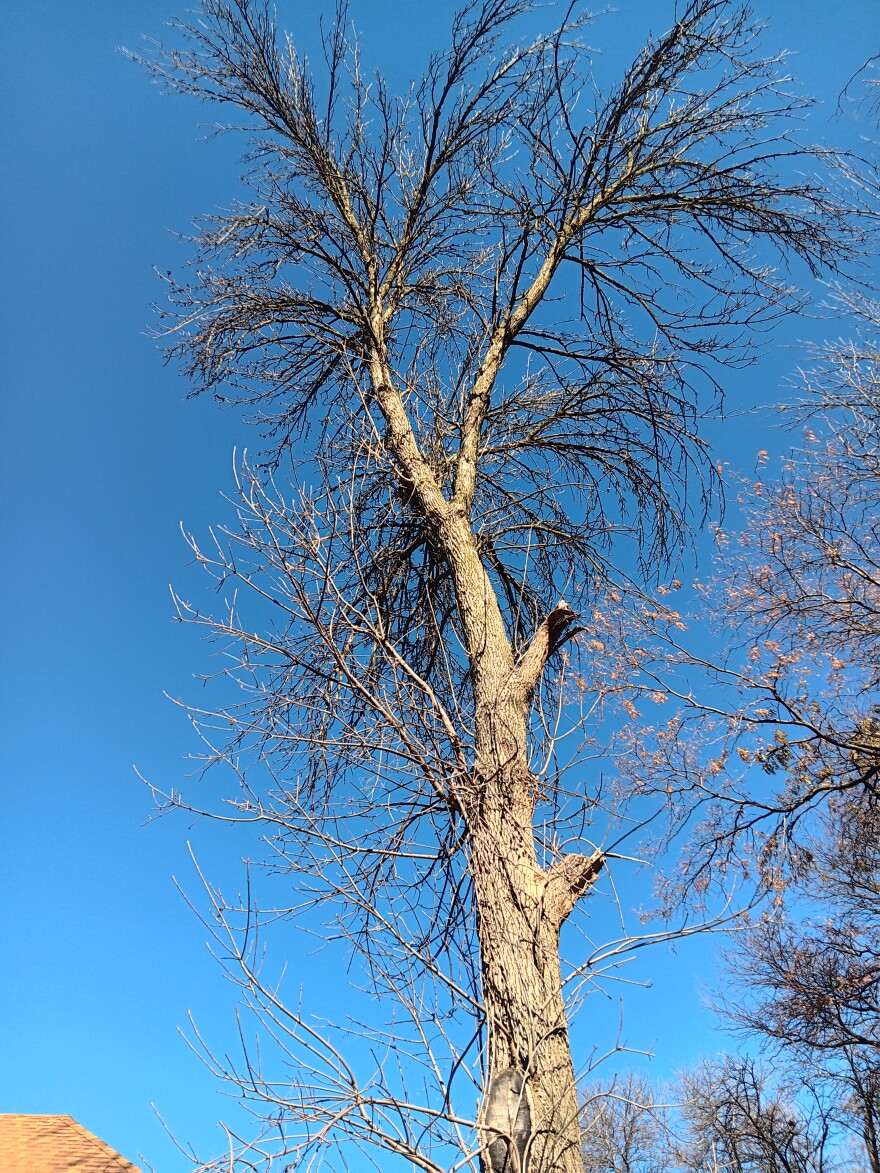Winter is prime pruning season, and although we’re about to bump into spring, you might still see crews on city streets and boulevards pruning trees. It’s one of the ways the city is working to keep Milwaukee's urban canopy healthy.
WUWM environmental reporter Susan Bence visited a crew pruning on Milwaukee's northwest side to learn how they’re adapting to climate change. She spoke with the City of Milwaukee's urban forestry manager, Randy Krause. He's been pruning trees for 30 years and took over the city’s urban forestry services management in 2019.
He watches a crew scale a tree—some with ropes, others using ladders. They’re lopping off branches from the canopy on the city’s northwest side.

Krause says the idea is to help the trees sustain the rigors of more severe storms.
“It’s really important—even with the younger trees that we set that structure up properly—so when they grow to mature size, they can withstand higher winds and stronger storms,” he says.
Krause says although the basics of urban forestry have remained constant over his 30-year career, “Ways we’ve evolved is we diversify our street populations,” he says.
Diversity means incorporating trees that used to be considered suited for warmer climates, not Wisconsin’s.
“Buckeye, tulip poplar and black gum trees normally are indigenous a little bit farther south of us. We’re experimenting with those trees to see if they’ll grow for us here,” Krause says.
The city plants about 3,600 young trees annually. They fill holes in the canopy when older trees succumb to storms and other forces.

One of the forces threatening trees in the city is the emerald ash borer.
“These are all ash trees along here. We have approximately a little under 26,000 ash trees, which is about 13 percent of our overall population,” Krause says.
In the early 2000s, the invasive, nonnative beetle was detected in Michigan. The emerald ash borer has since eaten the life out of ash trees around the United States.
The beetle hit Milwaukee in 2008. The next year, Krause said the city started treating its healthy ash trees to protect them from the beetles. Even though that extra protection was supposed to be temporary, the city has continued doing it because the threat to ash trees hasn’t gone away.
The ash we’re looking at—although not yet leafed out—stretches high and wide, spanning the street below. The city didn’t want to give up that established canopy.
“Its larger canopy provides really important benefits—stormwater retention, moderating heat stress through the shade, cleaning the air, cleaning our water—so they contribute a lot,” he says.
While Krause’s crews keep city ash trees healthy, arborist Caitlin Reinartz is focused on what she calls residential “hazard trees”—or trees that could fall and cause damage to homes or harm people.

We’re looking at a house in the Sherman Park neighborhood, where two massive stumps erupt from the earth.
“This house had two dead ashes in it, and that stump you see closer to the house—that tree was actually leaning up towards both of these houses,” Reinartz says.
Reinartz coordinates a program called Branch Out. It works with residents to care for trees on their property—removing hazardous ones while pruning others to keep homes safe and encourage the tree’s health.
“You’ll see as we come past this house—there used to be all kinds of branches that came onto the roof, and those got cut back. And then when you look into the canopy, you can see it’s nice and open, allowing air movement through and sunlight to hit all the leaves and really ‘up’ the photosynthetic rate of that tree.”
Reinartz says even a young tree makes a difference. She points to an eastern redbud she helped a family plant late last spring.

"That tree, it’s only two feet taller than I am. In the summer, it will have the same cooling effect of seven to 10 window air conditioners," she says.
That cooling effect is important in Milwaukee neighborhoods that are considered urban heat islands because they lack vibrant green spaces.

It’s going to take lots of little trees growing into healthy big ones to make a dent, but that doesn’t faze Reinartz. "You’ve got to start with a few to get to a lot," she says.







